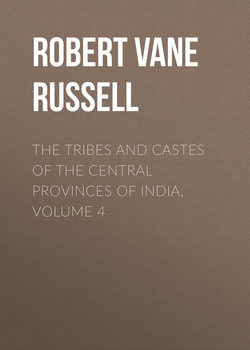Читать книгу The Tribes and Castes of the Central Provinces of India, Volume 4 - Robert Vane Russell - Страница 15
Part II
Articles on Castes and Tribes
Kumhār—Yemkala
Vol. IV
Kunbi
2. Settlement in the Central Provinces
ОглавлениеIt is stated that the Kunbis entered Khāndesh from Gujarāt in the eleventh century, being forced to leave Gujarāt by the encroachments of Rājpūt tribes, driven south before the early Muhammadan invaders of northern India.15 From Khāndesh they probably spread into Berār and the adjoining Nāgpur and Wardha Districts. It seems probable that their first settlement in Nāgpur and Wardha took place not later than the fourteenth century, because during the subsequent period of Gond rule we find the offices of Deshmukh and Deshpāndia in existence in this area. The Deshmukh was the manager or headman of a circle of villages and was responsible for apportioning and collecting the land revenue, while the Deshpāndia was a head patwari or accountant. The Deshmukhs were usually the leading Kunbis, and the titles are still borne by many families in Wardha and Nāgpur. These offices16 belong to the Marātha country, and it seems necessary to suppose that their introduction into Wardha and Berār dates from a period at least as early as the fourteenth century, when these territories were included in the dominions of the Bahmani kings of Bījapur. A subsequent large influx of Kunbis into Wardha and Nāgpur took place in the eighteenth century with the conquest of Raghūji Bhonsla and the establishment of the Marātha kingdom of Nāgpur. Traces of these separate immigrations survive in the subdivisions of the caste, which will now be mentioned.
15
Khāndesh Gazetteer, p. 62.
16
Bombay Gazetteer, vol. i. part ii. p. 34.
